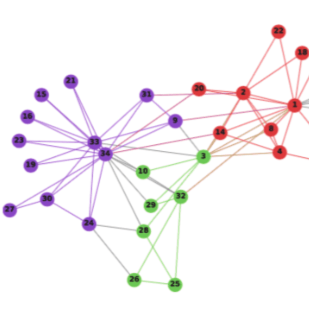Random walks are at the heart of many existing network embedding methods. However, such algorithms have many limitations that arise from the use of random walks, e.g., the features resulting from these methods are unable to transfer to new nodes and graphs as they are tied to vertex identity. In this work, we introduce the Role2Vec framework which uses the flexible notion of attributed random walks, and serves as a basis for generalizing existing methods such as DeepWalk, node2vec, and many others that leverage random walks. Our proposed framework enables these methods to be more widely applicable for both transductive and inductive learning as well as for use on graphs with attributes (if available). This is achieved by learning functions that generalize to new nodes and graphs. We show that our proposed framework is effective with an average AUC improvement of 16:55% while requiring on average 853x less space than existing methods on a variety of graphs.
翻译:随机行走是许多现有网络嵌入方法的核心。 但是,这种算法由于随机行走的使用而有许多局限性,例如,这些方法产生的特征无法转移到新的节点和图表,因为它们与顶点身份相关。 在这项工作中,我们引入了“角色2Vec”框架,该框架使用灵活的随机行走概念,并用作推广现有方法的基础,如DeepWalk、Node2vec和许多其他随机行走。我们提议的框架使这些方法能够更广泛地适用于具有属性(如果有的话)的传输和感化学习以及图形。这是通过学习功能,即通化为新的节点和图表实现的。我们显示,我们提议的框架有效,平均AUC改进16:55%,同时平均需要比各种图表的现有方法少853x空间。


